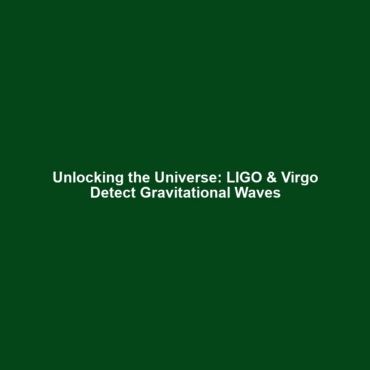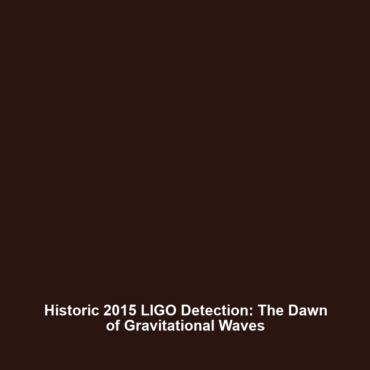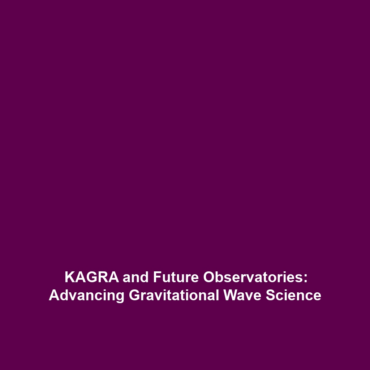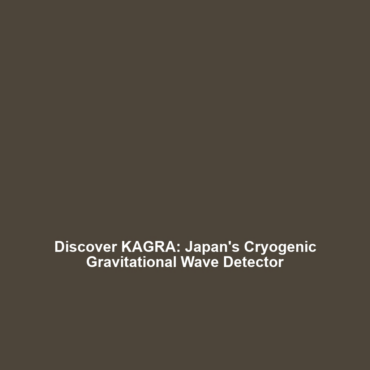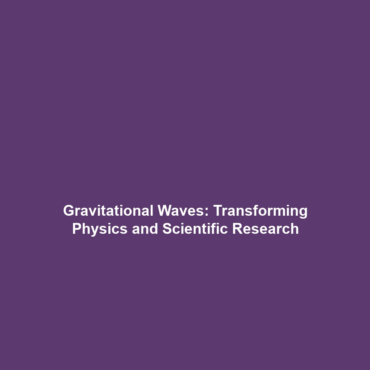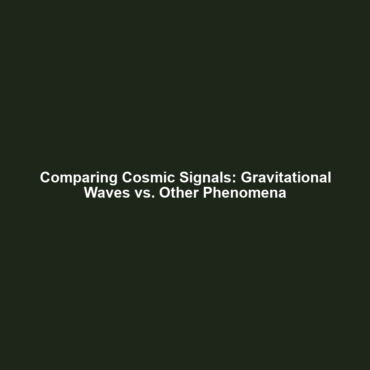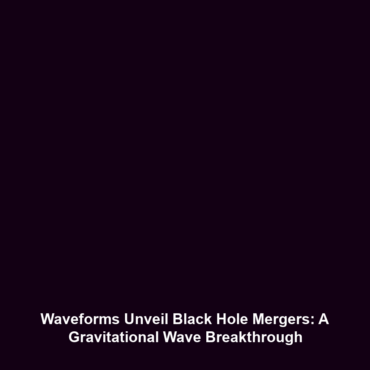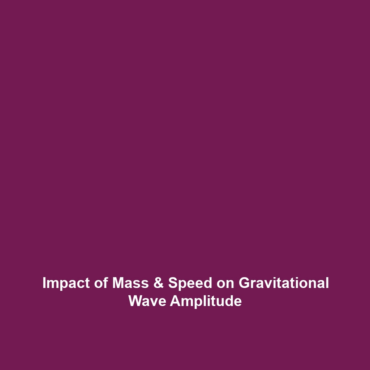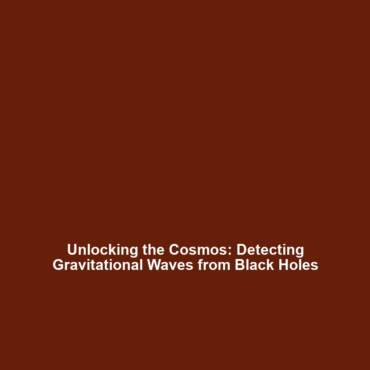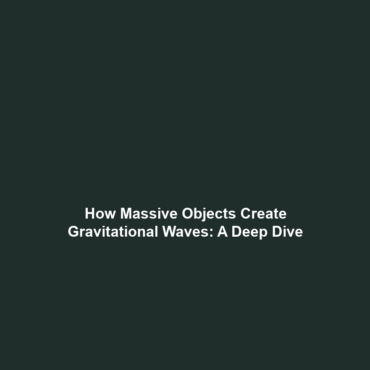LIGO and Virgo Detectors: The Two Main Observatories That Detect Gravitational Waves
Introduction: Gravitational waves are ripples in spacetime caused by the acceleration of massive objects. The Laser Interferometer Gravitational-Wave Observatory (LIGO) and the Virgo interferometer represent critical achievements in modern astrophysics, enabling scientists to detect these elusive phenomena. By understanding the instrumental capabilities and significance of LIGO and Virgo within the broader context of gravitational waves, researchers have opened a new window on the universe, offering insights into cosmic events like black hole mergers and neutron star collisions. This article delves into the mechanics of these observatories, their applications, challenges, and the future of gravitational wave research.
Key Concepts of LIGO and Virgo Detectors
The LIGO and Virgo detectors use highly sophisticated technology to detect gravitational waves. Below are the core concepts surrounding their operation:
- Laser Interferometry: Both LIGO and Virgo use laser beams to measure the minute changes in distance caused by passing gravitational waves. The detectors employ long arms (4 kilometers for LIGO and 3 kilometers for Virgo) that create interference patterns sensitive enough to pick up distortions less than a hundredth of the diameter of a proton.
- Signal Processing: Advanced algorithms are required to filter out background noise and identify the characteristic signals of gravitational waves, improving detection sensitivity.
- Multi-Messenger Astronomy: The capability to simultaneously observe gravitational waves and electromagnetic signals presents a unique opportunity to study astrophysical events in a holistic manner.
Applications and Real-World Uses
The applications of LIGO and Virgo detectors extend beyond theoretical research; they have several real-world implications in the field of astrophysics. Some notable examples include:
- Understanding Cosmic Events: LIGO and Virgo have made it possible to witness events such as black hole mergers, providing empirical data that enhances our understanding of the universe’s structure.
- Testing General Relativity: The observations made by these detectors allow scientists to test Einstein’s theory of general relativity under extreme conditions.
- Public Engagement and Education: The observatories engage the public in scientific discovery, fostering interest in gravitational physics and engineering.
Current Challenges in Detecting Gravitational Waves
Despite their successes, LIGO and Virgo face several challenges in the study of gravitational waves:
- Sensitivity Limitations: While increasingly sensitive, the detectors still struggle to detect faint signals from distant or less massive events.
- Environmental Noise: Seismic activity and local disturbances can create noise that complicates signal detection and interpretation.
- Funding and Resource Allocation: The ongoing need for maintenance and upgrades requires significant financial and institutional support to sustain research initiatives.
Future Research and Innovations
The future of gravitational wave detection promises exciting innovations:
- Next-generation Detectors: Projects like LIGO-III and the Einstein Telescope aim to improve sensitivity and broaden the range of observable frequencies.
- Space-based Observatories: Upcoming missions such as the LISA (Laser Interferometer Space Antenna) aim to detect lower-frequency gravitational waves originating from massive binary systems.
- AI and Machine Learning: Implementing advanced algorithms and AI for data analysis aims to enhance the detection reliability and uncover new astrophysical phenomena.
Conclusion
LIGO and Virgo are at the forefront of gravitational wave research, significantly advancing our understanding of the cosmos. By detecting events that were once beyond our observational capabilities, they have transformed the field of astrophysics. As we look toward the future, innovations and enhanced technologies are expected to unravel even more mysteries of the universe. For further reading on gravitational waves, consider exploring additional resources available on this website.
